In this section we are going to talk about a very important subject: bonsai care. There are many ways to grow a bonsai: From seed, getting a prebonsai (which is a germinated tree on its early stage), or buying a full grown miniature tree. In all three cases, good care is the only chance to keep your bonsai alive, healthy and beautiful.
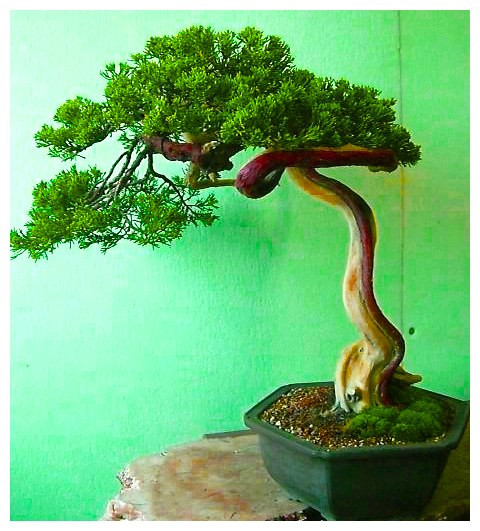
When you grow a bonsai from seed, you’ll have to wait until the tree is germinated and strong enough to be treated as a bonsai (remember there are no bonsai “special” seeds, all miniature trees grow from regular seeds). This is a long process that can take months and even years. Think about it if you’re a beginner and you want to see results right away. You must also keep in mind that bonsai growing have a lot to do with patience. If it is your first time with a miniature tree, we always recommend getting a prebonsai and plant another by seed at the same time. That way you’ll learn both procedures. Of course you can skip all this and buy yourself a full grown bonsai, but in this case the development of the tree won’t have much to do with growing but with caring.
The most important procedures when it comes to bonsai care are:
WATERING

As we said before, miniature species have different characteristics especially when it comes to bonsai care. Some will need more irrigation than others. You should also think about the climate and weather that surrounds it. There’s no specific schedule or routine for watering a bonsai. The best way to know how often you should irrigate it’s to constantly check the soil: It should never be completely dry. Try to keep it moist and wet but be careful not to overwater it because it can harm its roots. If the leaves of the miniature tree start to turn yellow, you could be overwatering it.
If you have your bonsai outdoors try not to use your regular garden hose to water it because it can modify the composition of the soil (however you can put a sprinkler on it and spray your plant very softly). A plant mister is a good option. It’s not a bad idea to collect rainwater and then use it on the miniature tree as part of your bonsai care. However this is not strictly required since you can use tap water as well. Try to emulate rain and irrigate the whole tree, from its leaves to the soil.
The soil composition may have an impact on how often you should water your bonsai. More compost may retain more water for a longer period of time. Remember: Watering is a very important factor when it comes to bonsai care and should be checked constantly.
PLACEMENT
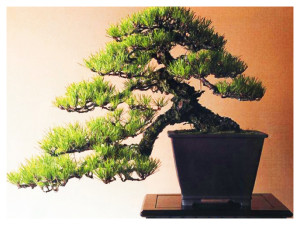
When talking about bonsai care, this is a very important matter. Depending on the specie of your miniature tree you should find out which is the best place to put it. As we explained before, there are indoor and outdoor bonsais. For the first case you should know that most trees do better with morning and afternoon sun. There must always be a source of sunlight near the bonsai. If there are walls around your tree you should consider moving its position once in a while or it’ll start growing on the side in which the sun hits it directly. The temperature of the room must be constant as well.
If it is an outdoor bonsai you should be aware of the typical climate of the tree, if it’s tropical or template for example. Be careful to protect your tree of strong winds which could hurt its structure. If you live in a town where it rains constantly you should check the bonsai soil, especially before watering. Bonsai care has a lot to do with the way your tree reacts to the conditions of the environment surrounding it. So be always aware of its development and if something doesn’t look right check carefully if it has to do with the spot where you place it, even though it’s not the only aspect for a healthy miniature tree.
FERTILIZING
Just like real trees, an important aspect on bonsai care is fertilization. This activity should be done throughout the whole growing process. Remember that the miniature tree roots are restricted to the pot containing it and cannot look for nutrients like trees in the wilderness, so it is your responsibility to feed it with the right ingredients to keep it healthy and strong.
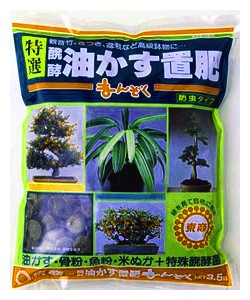
As part of your bonsai care, you should fertilize it constantly during spring, summer and early fall. Those months are known as the growing season. There’s special bonsai fertilizer, but you can also use an average one. However you must be aware that using too much can harm your tree. Also remember that tree species are different, so the way you feed them may differ from one to another.
Fertilizers have tree main elements: Nitrogen, Potassium and Phosphorous. Keep in mind that each one of them has a specific function: Nitrogen focuses on feeding leaves and stems, Potassium on helping growing fruits and flowers and Phosphorous supplying the roots. During the year there are elements that are more needed than others when fertilizing. In autumn for example, Potassium and Phosphorous are needed and Nitrogen isn’t because the tree needs to get ready for the winter. The opposite occurs during spring when you need more Nitrogen than the other elements, to help on the bonsai growing. Summer is the most balanced part of the year when it comes to fertilizer elements. Most fertilizing brands show the percentage of these components on their package like this: NPK, N for Nitrogen, P for Phosphorous and K for Potassium with the percentage of the elements like this: NPK 10:10:10.
It’s important to know that when you repot a bonsai a month should pass without fertilization. Also, if your tree is sick, don’t try to cure it with fertilizer. Most fertilizing brands have instructions on how often you should use their product on your tree. Usually it shouldn’t be more often than once every two weeks.
REPOTTING
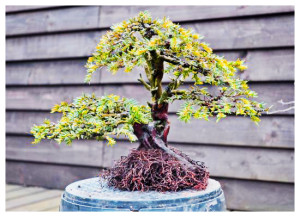
Every once in a while you must repot your miniature tree. It’s one of the most important steps when it comes to bonsai care. This is needed because at some point the roots are going to grow extensively and the pot is going to be way too small for them. If the plant container become in what’s known as pot-bound, meaning that the root system have fill the pot, then the bonsai may be harmed. As usual, the specie of the tree may have an important role on this activity.
Usually the repotting has to be done in a specific time of the year: early spring. This is because that’s when the growing season starts, and as the branches and leaves start flourishing, the roots need to become bigger to fill the feeding necessities of the tree. In nature there’s no problem with this process but with a potted plant, there are space limits. Some bonsais may be repotted every two years, others just one, others as long as five. It depends mostly on how fast the tree grows.
If you want to know if your bonsai needs to be repotted, you must check every spring the roots of your tree by removing it from the pot containing it. If the roots have grown so much than they are already circling the main root system, then you may have to do this procedure. If the roots are still contained in the soil, then you’re safe.
In case you have to repot your bonsai you need to be aware of the new soil you must use to place it. You have to be very careful of the different elements that should be found on the new soil. Also remember that you’re not supposed to fertilize a recently repotted bonsai for at least a month. Rights amounts of compost, gravel and akadama may be used: Usually the pot should be filled: 25% of the first and 25 % of the second, and 50% of the third. This is not an exact measure because there are many variable factors, like climate and weather or the bonsai placement, outdoors or indoors. Be aware that in this formula the compost is the one that retains water, so if you have your bonsai outdoors in a place where there´s constant rain you may want to think twice how many compost you must use, because if the soil absorb too much water the roots may rot.
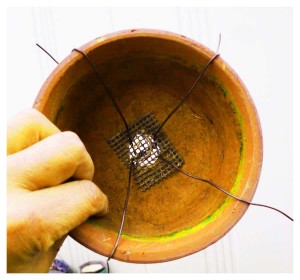
The moment you remove the bonsai from its original pot you must check carefully its roots after softly taking away the soil from them. In some cases, like in pine trees, you must not remove the whole soil because it’ll damage the bonsai. If there are some roots that are way too long you must trim them, especially if they won’t fit in the new pot. If they are very tangled try to fix them with a rake. There must be drainage holes in the new pot. Cover them with a plastic mesh and on top put a small layer of grit. Then put the miniature tree in the new pot. Cover its roots with the soil mix you prepared. Be careful not to leave any air holes on the new soil.
There shouldn’t any problems after repotting. The bonsai shouldn’t show any reaction. However you must keep observing its behavior carefully for a month. No fertilizers whatsoever. Protect it from strong winds, sun and rain, especially if it is outdoors. Do not over prune any branches right away.
Repotting as part of the bonsai care process is a procedure which may leave the tree weak for a few days in order to make him develop stronger during its growing season. That’s why you must constantly observe the miniature tree during this period of time.
PRUNING
Pruning it’s not only about bonsai care but about shaping your miniature tree as well. You must prune it constantly to keep it the way you want it to look. As we said before roots must be also trim. Both parts must be treated constantly in order to keep the bonsai balanced.
Shoots and buds must be taken care of. Some trees may have a tendency to grow to the top and outer parts, something that may be fine for some styles of bonsai but not for all. Pruning is the only way to revert or control this process. We’ve said before that we’re supporters of growing your first bonsais based on the shape of the original tree, but pruning is always necessary, as you may try to encourage growing in the inner parts of the miniature plant.
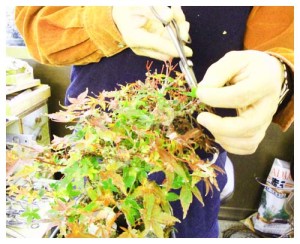
There are two types of pruning: style pruning and maintenance pruning. The first will model the shape and style of your bonsai, the second will keep it. Maintenance pruning must be done during what’s known as growing season and style pruning just before and after this period of time. You must always use the appropriate pruning tools. In some cases it can be done by hand. Different species mean different ways of pruning. Sometimes this process may be used to reduce leave size. You must prevent and prune vertical branches that are too big to turn. You should also take care of thick branches on the top of the tree because they can affect the look of the bonsai and make it look unnatural. Also be careful with branches that have weird twists and strange curves. When you remove branches of your tree make sure to put healing paste on the laceration. There are many of these curative products on the market, they’ll stop diseases and help the bonsai heal fast.
DISEASES
Just like real trees, bonsais can be affected by pests and diseases. You must check constantly for these uninvited guests. Viruses, fungus, insects and plagues are all common problems when you grow a bonsai. Some insects may be beneficial for your miniature tree, like worms and ladybugs. You must only remove the ones that affect it negatively, like grasshoppers.
If you have many bonsais and one gets infected with fungus or viruses make sure you separate it from the other miniature trees. Ask for advice in your local shop, they can help you identify the type of pest your miniature tree is suffering. They can also recommend you the best insecticides, fungicides and when to remove parts of the tree.
BONSAI CARE: FINAL THOUGHTS
We have given you plenty of information on bonsai care. However you may need more specific guidance on the subject. You need to do more research. You can look on the Internet but it might be tricky. There’s way too much information out there. Some of it may be useful but there are a lot of wrong facts on the net.
We’ve been recommending a few books for a while. These books will offer you step by step guidance and advice on bonsai care. No matter if you’re a beginner, an enthusiast or a pro.
After a lot of research, we also recommend three books on bonsai. All of them have plenty of step by step and specific information about how to grow a bonsai. They also have plenty of graphics and were made by experienced miniature gardeners.
The best book we know on bonsai is The Bonsai Book by Dan Barton, which we named a few lines ago. This is one of the most famous works on the subject and without a doubt the most complete. Everything you need to know is there, and when we say everything we really mean it. You can read our review about The Bonsai Book by Dan Barton here or buy it directly on Amazon by clicking on the image. This is the only book about bonsai on Amazon.com which all reviews give the top qualification of five stars, so our opinion that this is an amazing work is shared by many.
The Complete Book of Bonsai by Harry Tomlinson it’s our second recommendation. It is as complete as The Bonsai Book and also very well explained. It has amazing graphic material with plenty of beautiful pictures and images. The Complete Book of Bonsai will provide you with all the info you need to know on bonsai, from its principles, evolution and origins to its styles, techniques and species. Everything you need to know about growing bonsai is there. You can read our review on The Complete Book of Bonsai by Harry Tomlinson here or buy it directly on Amazon by clicking on the image.
Bonsai for Beginners by Ken Nakamura is another of our all time favourites. A great book for those who want to try out their bonsai gardening skills and improve. This essential grower’s guide explores the history and origins of bonsai trees, as well as how modern information and growing techniques have made bonsai trees and easy and accessible hobby for everyone to enjoy. With step-by-step instructions and plenty of beginner advice, you’ll learn how you can grow your first bonsai tree, create the perfect environment for it to flourish, trim it into stunning shapes, and so much more. You can buy it directly on Amazon by clicking on the image.
On the right column of this site you can find more reviews on bonsai books and products.

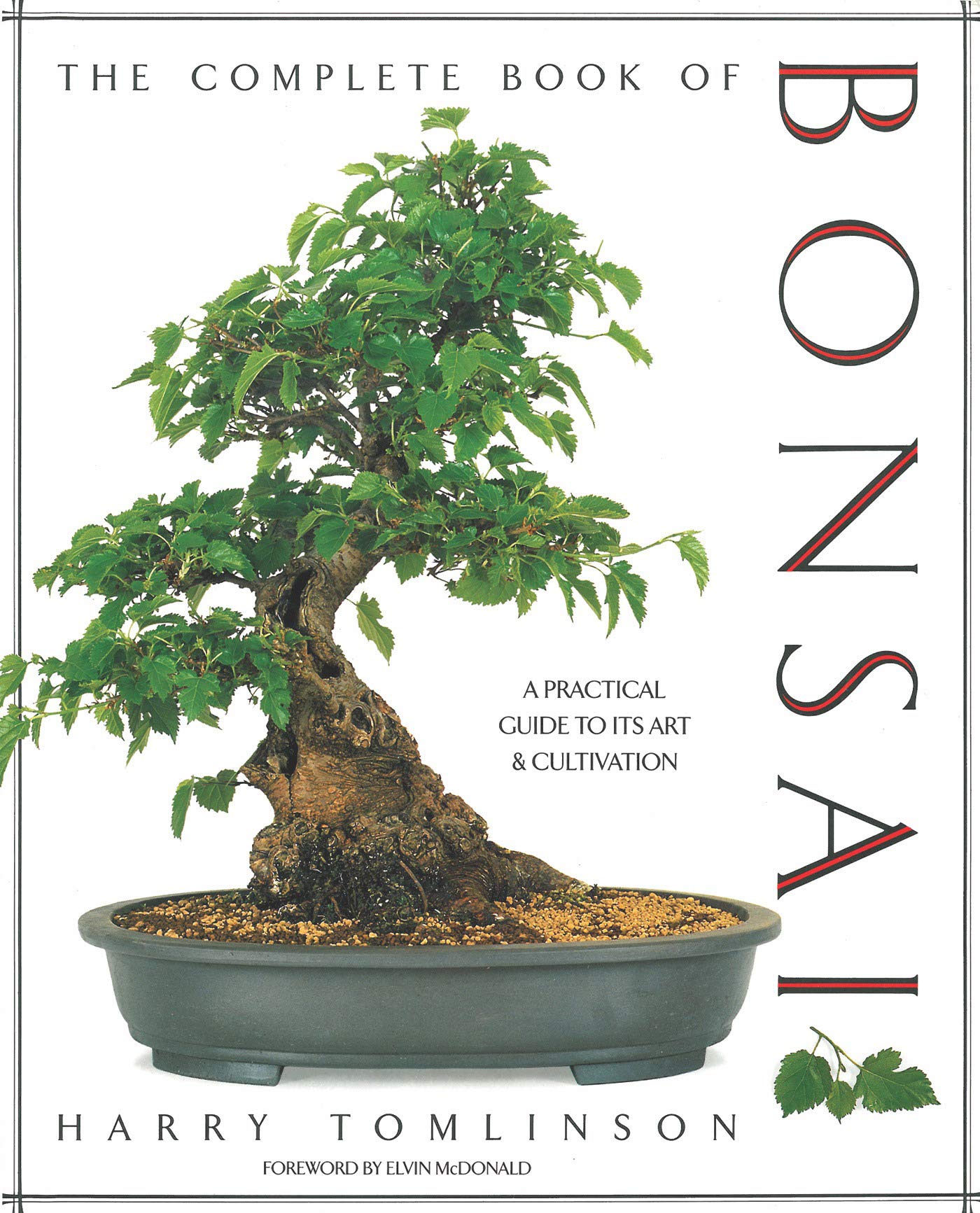
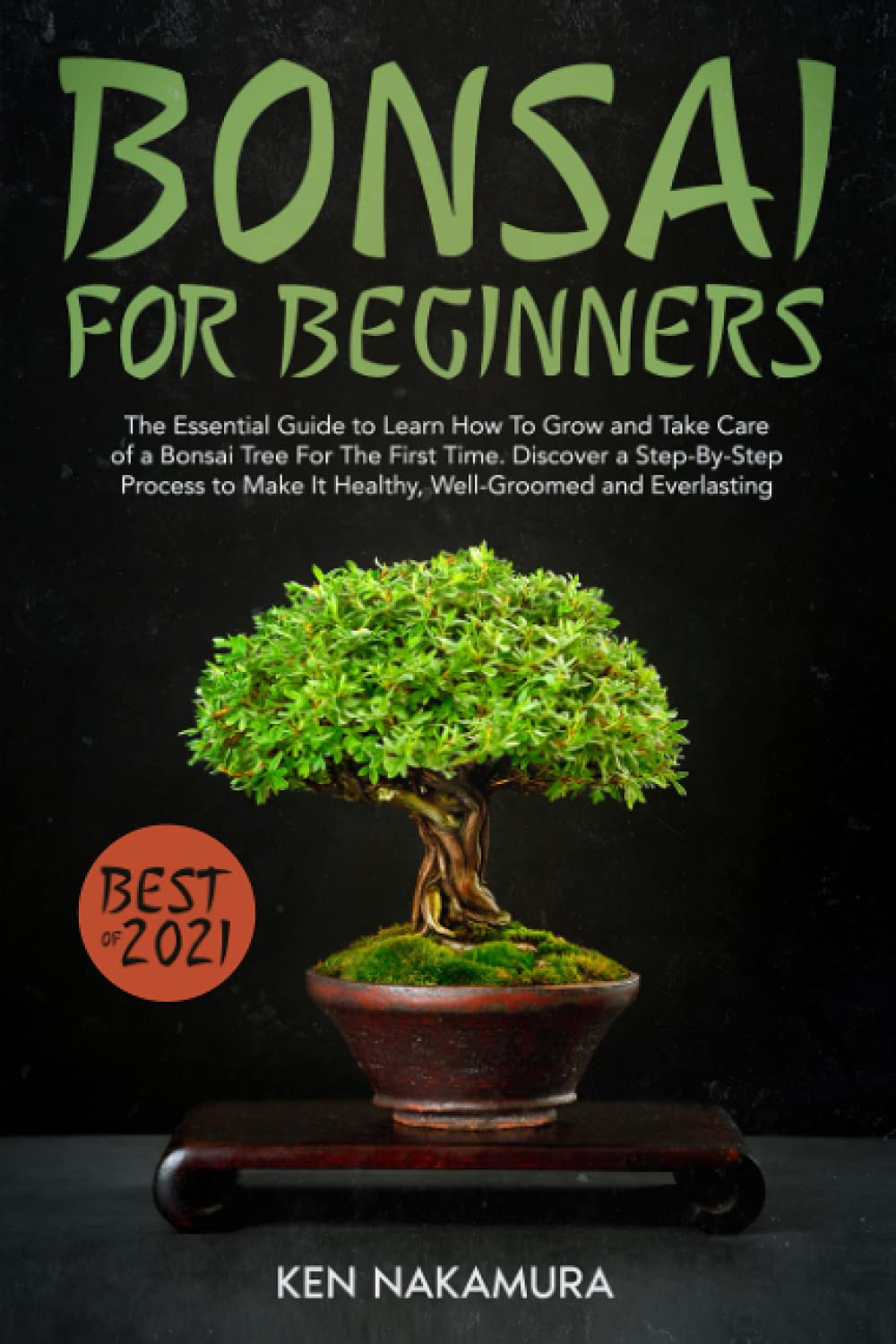
1 thought on “Bonsai Care”
Comments are closed.